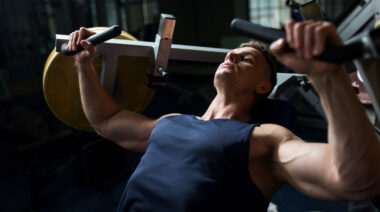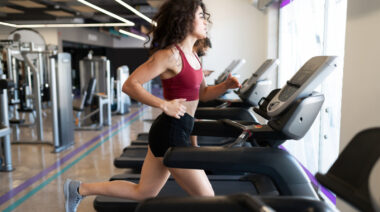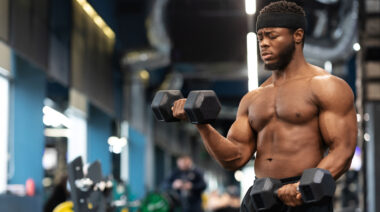My how the years fly by. It seems like yesterday, you were rolling your eyes listening to elders go on about how they remember being young and not having all these aches and pains—how they remember being your age, full of energy and unhampered by the need to exercise or watch what they ate. The threat of neglected health was once an abstract concept. Yet, here we are: joints achy, back cranky, blood pressure high, with an expanding waist.
My how the years fly by. It seems like yesterday, you were rolling your eyes listening to elders go on about how they remember being young and not having all these aches and pains—how they remember being your age, full of energy and unhampered by the need to exercise or watch what they ate. The threat of neglected health was once an abstract concept. Yet, here we are: joints achy, back cranky, blood pressure high, with an expanding waist.
You don’t want to be a model or pretend you are still 20 or even 30. You just want to move a little better, feel a little better, and, maybe, even look a little better. Or perhaps you are looking for how to help a friend who finds themselves in this situation, or a encourage a parent who is a little intimidated about diving into activity. The majority of workouts promoted online will be too aggressive for a new beginning.
Regardless of why you’re reading, the question is “where do we start?” You’re up off the couch and ready to do something. But, what?
The Beginner’s Plan
This is a beginner’s plan for someone achy, aging, and/or in less than ideal physical shape. It might be a good transition from an injury back to moving or from forward after years of neglect to better health. It is a foundation, a beginning. If you are looking for something more challenging, please check out my premium exercise programs The Will and The Way or Push, Pull and Thrive.
First let’s clarify: regardless of where you are and what your limitations, we all need some exercise. Every little bit helps. So where to begin. Working out is really complicated, right? I have almost 150 articles on Pulse Beat Fit, alone. There must be so much to know, right?
Not really.
You need a few simple understandings:
- Always execute movements technically. It is better to move well than to move poorly. Bad form can get you hurt and it is less effective. Therefore, learn to do exercises correctly. Learn to control the tempo. Every movement has three phases: a concentric, isometric, and eccentric, or, more simply, a lower, a pause, and a drive. For most early training we want to slow down the tempo to emphasize control and stability. In this way, a light weight becomes very challenging.
- All training is progression and regression. This is also called the Goldilocks principle. When exercise is too hard, you lose form, thus violating the above rule. Even if you can maintain form, harder is not always better. If you feel like you’re overdoing it, live to train another day. Conversely, when exercise is far too easy, it becomes less effective. You don’t get healthy shuffling papers on your desk. They’re too light. Therefore, we want to find the exercise intensity that is just right.
That is all you need to know to follow a good plan. Execute the movements. Regress if you can’t or if you feel uneasy about how hard you are pushing. I’ll handle the exercise selection sets, reps, etc. You don’t need any equipment to get started. So get up and let’s go.
The Plan to Get Off the Couch: Weeks 1 and 2
Especially at first it is better to do simple things at mild intensity on a daily basis than to crush ourselves a few days a week. I advise consistent, near-daily exercises done for 20 minutes or less. Add walking, cleaning, and other lifestyle movements and you are golden.
Week 1: In week one choose one of these circuits to do every day. You can do the same circuit each time, or mix them up. They should take about 10 minutes. For best results, shoot for 5 days out of 7 and use one of the off days to go on a walk.
Week 2: For week two do the same thing as week one, but on non-consecutive days shoot for a second round of the circuit, if you feel up to it. Try to do this at least twice throughout the week.
A good pattern might be:
| Monday | 2 rounds of circuit 1 |
|---|---|
| Tuesday | 1 round of circuit 2 |
| Wednesday | 1 round of circuit 1 |
| Thursday | 2 rounds of circuit 2 |
| Friday | Walk |
| Saturday | 1 round of each circuit |
| Sunday | Rest |
Circuit 1
Do these exercises in order. All exercises should be done slowly and controlled:
- Neck Nods – 5 up and down
- Neck Circles – 3 right and 3 left
- Arm Circles – 5 forward and 5 back
- Marching High Knees (right, then left leg) – 10/leg
- Standing Leg Lifts (right, then left leg) – 10/leg
- Lying Y – 10
- Lying T – 10
- Lying W – 10
- Push Up Position Plank (PUPP) or Normal Plank – Anywhere 5 to 30 seconds
- Bird Dog – 5/side
- Sit on the Floor and Stand Up – 10 (fewer if this gets excessively challenging)
- Glute Bridge Hold – Anywhere 5 to 30 seconds
Circuit 2
Do these exercises in order. All exercises should be done slowly and controlled:
- 6-Point Neck Nods – 5 up and down
- 6-Point Rocking – 5 back and forward
- Quadraped Donkey Kick Backs – 5/leg
- Push Up Positon Plank (PUPP) or Normal Plank – Anywhere 5 to 30 seconds
- Standing Upper Body Only Jacks – 15
- Bent Over Y-Raise – 15
- Straddle Stance Rotations – 5/side
- Partial Wall Sit – Anywhere 5 to 30 seconds
- Wall Push Ups – 10
- Side Lying Leg Lifts – 10/leg
- Superman – 5
Moving Forward: Weeks 3 and 4
Start each day with the daily warm up.
Week 3: In week three alternate between these two workouts. For best results, shoot for 5 days out of 7 and use one of the off days to go on a walk.
Week 4: In week four do the same as week three, but on non-consecutive days shoot for a second round of the circuit, if you feel up to it. Try to do this at least twice throughout the week.
A good pattern might be:
| Monday | 2 rounds of circuit 1 |
|---|---|
| Tuesday | 1 round of circuit 2 |
| Wednesday | 1 round of circuit 1 |
| Thursday | 2 rounds of circuit 2 |
| Friday | Walk |
| Saturday | 1 round of each circuit |
| Sunday | Rest |
Your Daily Warm-Up:
- Neck Nods – 5 up and down
- Neck Circles – 3 right and 3 left
- Arm Circles – 5 forward and 5 back
- Marching High Knees (right, then left leg) – 10/leg
- Standing Leg Lifts (right, then left leg) – 10/leg
- Lying Y – 10
- Lying T – 10
- Lying W – 10
- Push Up Position Plank (PUPP) or Normal Plank – Anywhere between 5 to 30 seconds
- Bird Dog – 5/side
- Sit on the Floor and Stand Up – 10 Times
Iso Hold Circuit
This is to be done after your warm up.
Note: slowly lower into each position and try to hold for 5 to 15 seconds before pushing out safely. Do not hit failure.
- Hands Offset Partial Squat
- PUPP
- Glute Bridge Right Leg
- Glute Bridge Left Leg
- Partial Split Squat Right Leg
- Partial Split Squat Left Leg
- Chair Hold Calf Raises
- Side Plank Right
- Side Plank Left
- Superman
Moving Circuit
This is to be done after your warm up.
We are moving more today but still focus on controlled, steady movement.
- Happy Baby – as long as desired
- Down Dog – Rocking back and forth as desired
- Frogger Hip Thruster – 10-20 steps
- Crawl or Bear Walk – 15-30 seconds
- Hands Offset Squats – 10
- Chair Hold Calf Raises -10
- Lying Y-W Handcuff – 10
- Shadow Boxing 1-2-1 Pattern – 5
- Bird Dog – 5/side
- On Back, Stand, On Belly, Stand – x10
Adjusting Exercise Intensity
You can always shift intensity higher or lower as you go, by moving along the intensity continuum. The goal is to get the variety and intensity you need each day by listening to your body and letting yourself explore.
To lower your intensity combine any of the following:
- Less Resistance (heavier)
- Less Speed
- Fewer Reps
- Less Density (less time working comparable to rest)
- Low-Intensity Exercises: jogging, rowing, biking, lightweight circuits, flows, jump roping, etc.
To make your intensity higher combine any of the following:
- More Resistance (heavier)
- More Speed
- More Reps
- More Density (more time working comparable to rest)
- High-Intensity Exercises: sprints, jumps, heavy resistance training, medium weight with short rest circuits, etc.
It is important to note that reps will actually be higher on the low-intensity end of the spectrum because other variables are so much lower. For example, in a heavy farmer’s walk (high-intensity locomotion) reps are the number of steps. I will go much further on an easy jog (low-intensity locomotion). Still, to raise the intensity of either exercise, I could just go further or do more reps.






